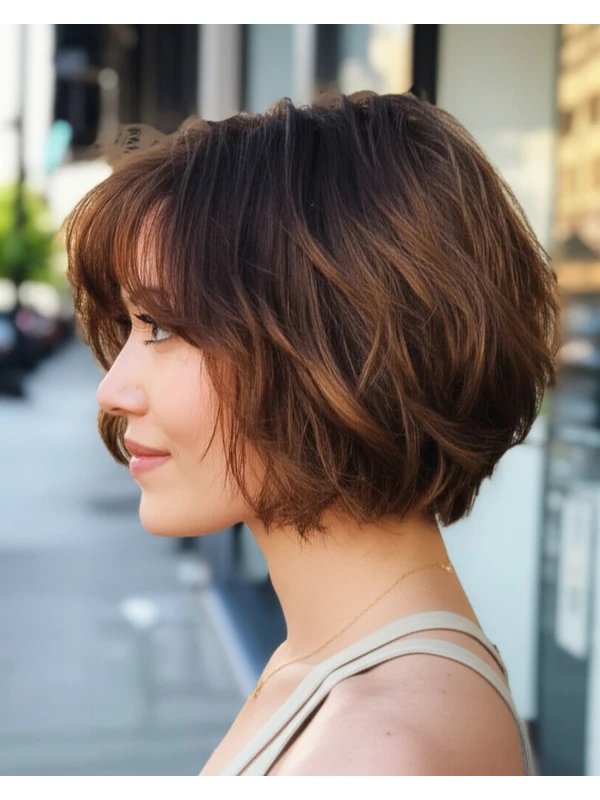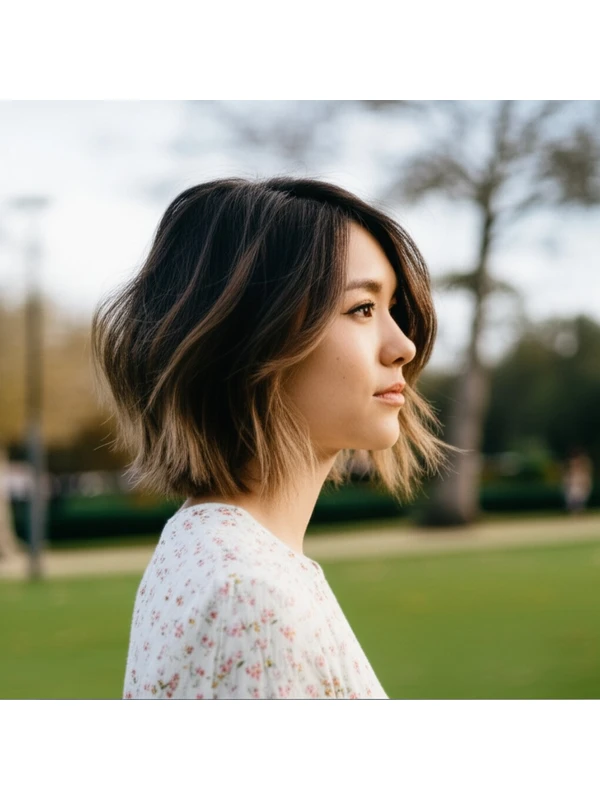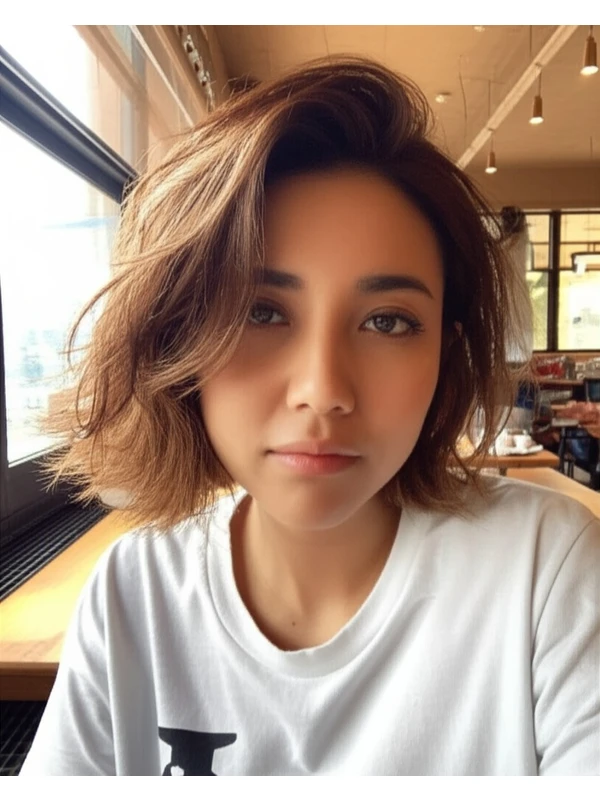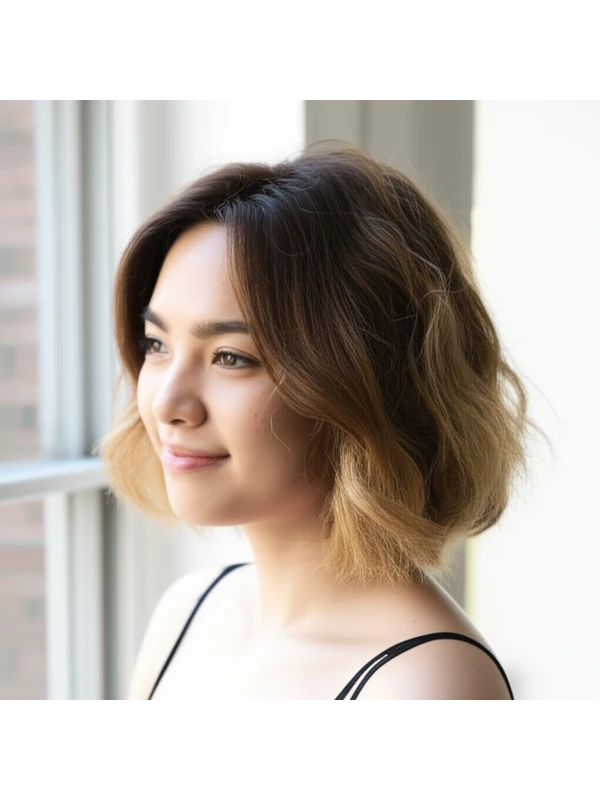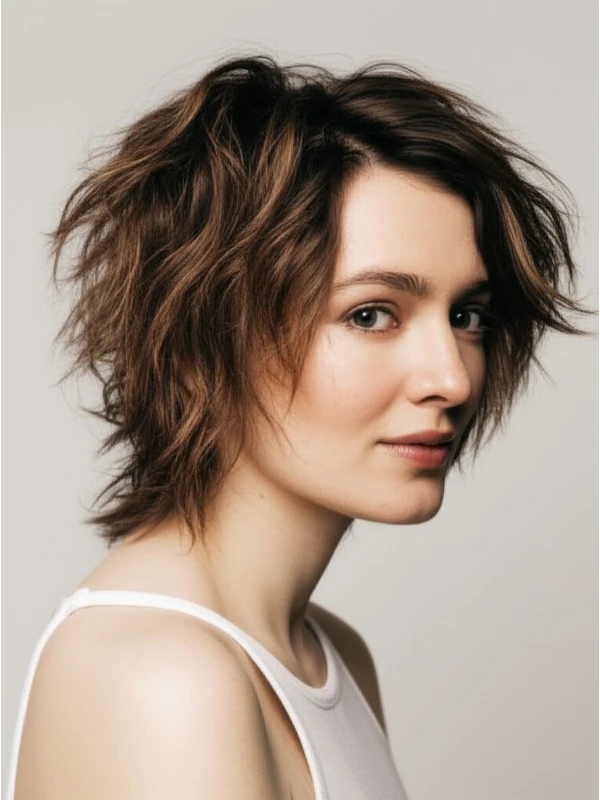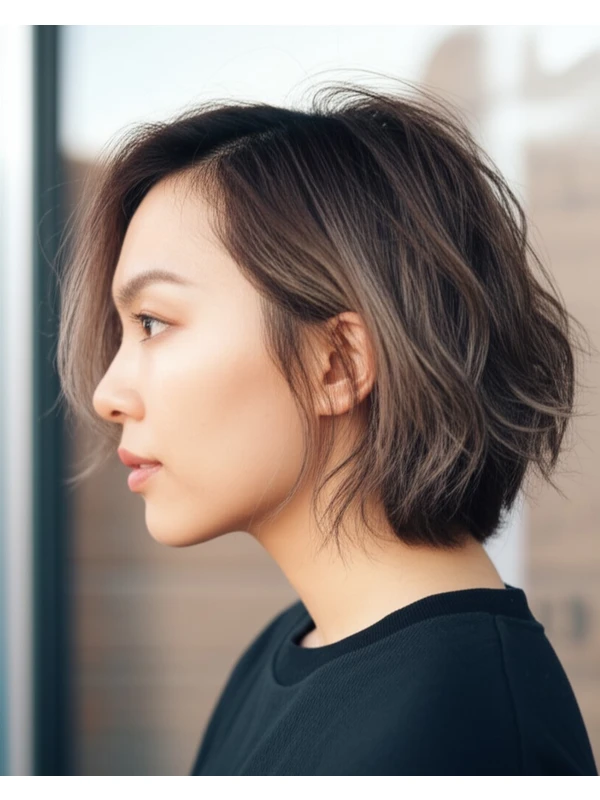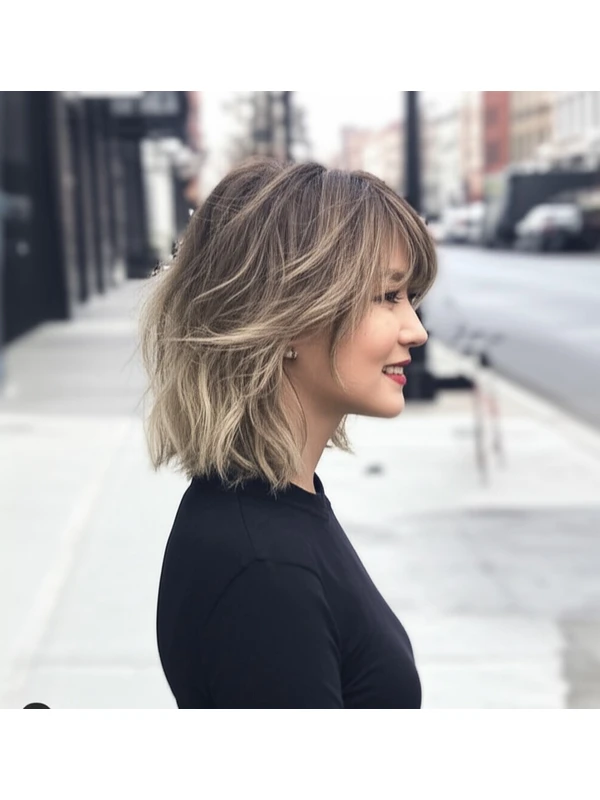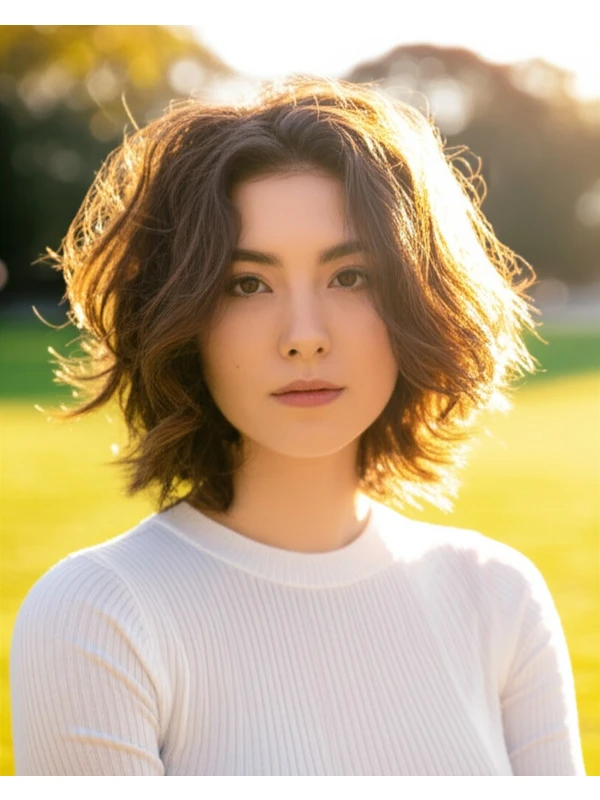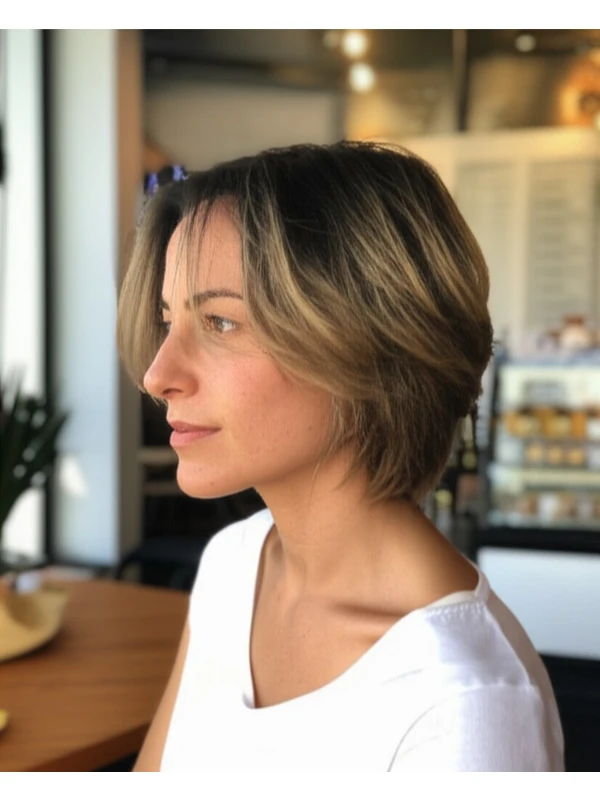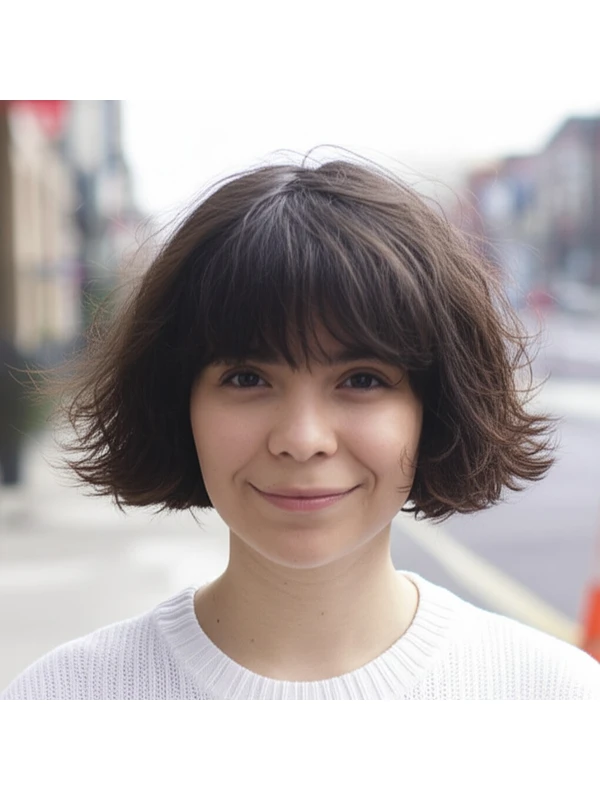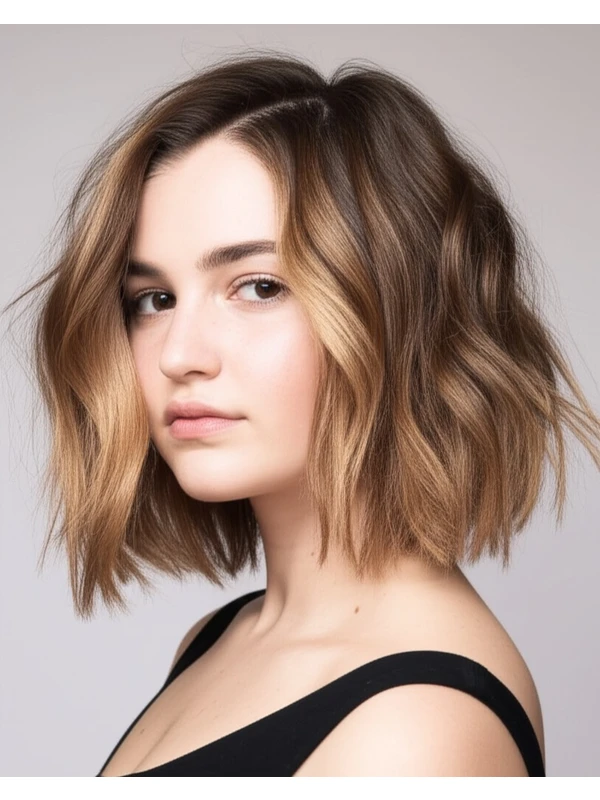#The Modern Mullet: A Bold Return with a Refined Edge
The mullet is back! But forget the awkward '80s version – this modern take is all about intentionality, personalization, and effortless cool. It’s a statement cut that's surprisingly versatile when done right. Let’s break down everything you need to know before taking the plunge.
#1) Background & Definition: What Is a Modern Mullet?
The mullet (a portmanteau of "mulatto" and "hairstyle") traditionally features short hair on the front and sides, with significantly longer hair in the back. The modern iteration softens those harsh lines. Think of it as a haircut that plays with asymmetry – shorter layers up top blending into longer lengths at the nape of your neck.
- Cut Geometry: It's about creating contrast! The front and sides are typically layered to remove weight, while the back retains volume and length. The transition between short and long isn’t abrupt; it's blended with face-framing layers or a softer graduation.
- Key Features: Asymmetry is key. A modern mullet avoids the boxy shape of its predecessor. It prioritizes movement and texture.
- Length Ranges: Front lengths can range from chin to jawline, while back lengths often fall between shoulder blades to mid-back – but this is highly customizable.
- Alternative Names: "Shag-mullet," "Wolf Cut" (often more dramatic), “Modern Pixie Mullet” (shorter and edgier).
#2) Face Shape Fit: Finding Your Perfect Angle
The modern mullet’s versatility shines in how it can be adapted for different face shapes. However, some adjustments are needed to achieve the most flattering result.
- Oval: Lucky you! An oval face is generally considered balanced and can pull off almost any variation of the mullet. A slightly longer fringe can add a playful touch.
- Round: Soften roundness with layers that angle downwards away from your face, especially around the cheekbones. Avoid blunt bangs; opt for wispy or side-swept fringes to elongate. Slightly longer back lengths help create vertical lines, visually slimming the face.
- Square: The mullet's asymmetry helps soften a square jawline. Face-framing layers are essential. A textured fringe can further break up angular features. Avoid very short, blunt cuts that accentuate the sharpness of your angles.
- Heart: Balance a wider forehead with side-swept bangs or curtain bangs that blend seamlessly into the layered sections. Longer back lengths help create balance with a narrower chin.
- Diamond: Similar to heart shapes, soften strong cheekbones and jawlines with layers and face-framing elements. A fringe isn’t always necessary but can be flattering if soft and textured.
- Oblong (Long): Add width with layered volume on the sides. A shorter front length or a blunt, eyebrow-grazing fringe can help shorten the appearance of an elongated face.
#3) Body Proportions & Height Guidance: Silhouette Considerations
The mullet’s impact isn't just about your face; it affects your overall silhouette.
- Petite: Shorter back lengths (collarbone to shoulder) prevent overwhelming a smaller frame. Avoid excessive volume at the crown, as this can make you appear shorter.
- Average Height: Most length variations work well for average heights. Consider your shoulder width – broader shoulders benefit from layers that create softness and movement.
- Tall: Longer back lengths (mid-back or longer) complement a taller stature. Volume at the crown adds visual interest and prevents looking too elongated.
- Narrow Shoulders: Create the illusion of wider shoulders with layered volume around the shoulder area.
- Broad Shoulders: Soften broad shoulders by avoiding excessive bulk on top. Focus on creating movement and flow rather than adding significant height or width.
- Neck Length: A shorter neck can be elongated with a slightly longer fringe and strategically placed layers that draw the eye upwards. Longer necks can handle more volume at the back.
#4) Works Best With Hair Types & Densities: Texture Matters!
The modern mullet isn't one-size-fits-all; it requires adjustments based on hair type and density.
- Straight: The cut’s asymmetry is easily achieved with straight hair, but it can fall flat without proper styling (texture spray or a quick tousle).
- Wavy: Waves add natural texture and movement to the mullet, making styling easier. Embrace your wave pattern – layers should enhance, not fight, its flow.
- Curly & Coily: The modern mullet can work beautifully with curls and coils! However, communication with your stylist is crucial to account for shrinkage. Shorter lengths are often necessary to avoid excessive bulk.
- Shrinkage Tip: Curls can shrink significantly when dry (sometimes up to 50%). Discuss this with your stylist so they cut accordingly. Consider a "curly cut" technique, where the hair is cut dry and styled in its natural texture.
- Fine Hair: Layers are essential for creating volume. Avoid overly long lengths that will weigh down fine strands. A root-lifting product can boost lift at the crown.
- Medium to Thick Hair: The mullet's layers help remove weight and create movement, preventing a heavy or boxy appearance.
#5) Styling Variations: From Casual Cool to Evening Glam
The modern mullet is surprisingly adaptable!
- Sleek vs. Textured: Sleek styles use smoothing serums for a polished look. Textured styles embrace natural texture with sea salt sprays and texturizing creams.
- Middle vs. Side Part: A middle part balances the asymmetry, while a side part adds softness and dimension.
- Fringe Variations: Blunt bangs, wispy fringes, curtain bangs – all can be incorporated depending on your face shape and desired look.
- Occasion Styling:
- Casual: Air-dry with texturizing spray for effortless cool.
- Office: Sleeked down layers with a polished fringe (if you have one).
- Evening: Add volume at the roots, create defined waves or curls, and finish with hairspray.
#6) Maintenance: Keeping Your Mullet Sharp
Regular trims are key to maintaining shape.
- Trim Cadence: Every 6-8 weeks is typical.
- At-Home Routine: Gentle shampoo and conditioner suited for your hair type. A leave-in conditioner is vital, especially for dry or curly textures.
- Heat vs. Air Dry: Minimize heat styling to protect hair health. When using heat tools, always use a heat protectant.
- Product Checklist: Shampoo & Conditioner, Leave-In Conditioner, Texturizing Spray (for texture), Smoothing Serum (for sleekness), Hairspray (for hold).
- Estimated Daily Styling Time: 5-20 minutes depending on desired style and hair type.
#7) Grow-Out Roadmap: The Evolution of Your Cut
The mullet changes dramatically as it grows out.
- Months 1-3: The initial shape is most defined. Regular trims maintain the layered look.
- Months 4-6: The back length starts to become more prominent. Layers may need adjusting to prevent a boxy appearance. Consider adding face-framing layers if needed.
- Beyond 6 Months: Continues to grow, allowing for greater personalization and experimentation with styling techniques.
#8) Color Pairings: Enhancing the Dimension
Color can dramatically enhance the modern mullet’s visual impact.
- Cool Undertones (Ash Blonde, Silver): Create a sleek and edgy vibe.
- Warm Undertones (Golden Brown, Copper): Add warmth and dimension, especially flattering for those with warmer skin tones.
- Low-Commitment Options: Balayage or babylights add subtle highlights without the need for root touch-ups.
#9) Season & Occasion Guide: Adapting to the Moment
- Spring/Summer: Embrace lighter textures and brighter colors. Air dry more often, use lightweight products.
- Fall/Winter: Add richness with deeper tones and focus on protecting hair from dryness. Sleek styles are perfect for formal occasions.
- Work: Keep it polished and professional – a sleek style or softly styled fringe can be ideal.
- Weddings & Parties: Experiment with more dramatic styling, such as waves or curls, and consider adding embellishments like clips or headbands.
#10) Cost & Time: What to Expect at the Salon
- Salon Time: Expect a consultation lasting 15-30 minutes followed by a cut taking approximately 45-90 minutes.
- Price Range: The cost will vary depending on your location and stylist experience, but expect to pay in the mid-to-high range for this specialized cut.
#11) Pros & Cons: Weighing Your Options
Pros: Unique and stylish; versatile styling options; flattering for many face shapes; can add volume and dimension. Cons: Requires regular maintenance trims; can be high-maintenance depending on desired style; not universally flattering (needs careful tailoring); potential to look dated if styled incorrectly.
#12) Salon Consultation Script: Questions to Ask
Here are some questions you can bring up during your consultation:
- "I'm interested in a modern mullet, but I’m worried about it looking too harsh on my [face shape]. How can we soften the look?"
- “Can you show me examples of mullets that work well with my hair texture/density?”
- “What length would be most flattering for my face and body proportions?”
- "How much time will styling this cut realistically take each day?"
- "What products do you recommend for maintaining the shape and health of my hair after the cut?"
Disclaimer: This article provides general hairstyle advice. Consult with a qualified hairstylist for personalized recommendations tailored to your individual needs and hair type.
